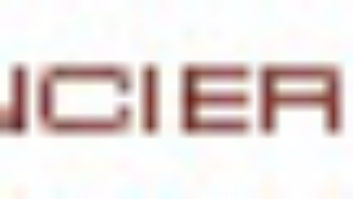Because my editors have things covered in the audio realm, this month’s column looks at the other new stuff happening around the latest Macworld conference (January 6-10, 2003, San Francisco) in my astonishingly overpriced pueblo by the bay. All you Windows kids out there, don’t tell me it’s “…just a bunch of Mac weenies!” I’ve got some info for you, too.
By now, you’ve probably heard the buzz regarding the new PowerBooks, both big and small. Two unique features of the big PowerBook should be of particular interest to engineers, namely the display and the keyboard. One word about the display says it all: large. More of your DAW will fit on the 17-inch screen — all visible at a glance. As for the keyboard, it has a brilliant innovation: An auto-sensing backlight that’s perfect for that dank cocoon you call your office.
But what really excites me most about these puppies is their new I/O; the technology formerly known as 1394b has finally arrived. This points the way toward FireWire 800, as it’s now known, showing up everywhere in the next generation of computer peripherals, hi-fi/home theater and home networking gear. So far, only the copper implementation of FireWire 800 has come out of Texas Instruments, the leading PHY chip vendor, so we’ll have to wait for UTP, plastic and glass optical-fiber versions in future silicon. Speaking of which, the wizards at Oxford Semiconductor are also ready for FireWire Deux. Their former 1394 performance leader, the model 911 chip, must pass the torch to the new 922, which combines USB 2.0 and 1394b bridged to IDE. All of the serious FireWire vendors — LaCie, Century Global, SmartDisk, Wiebe, etc. — are using the 922 in their ATA-6/FireWire 800 bridges and PCI HBAs, so ask for it by name.
Also in the storage department, I talked with the folks at Exabyte about the new FireWire 400 version of their VXA-2 desktop drive, along with some compact and affordable library products based on that format. They’re looking forward to migrating the current crop of 1394 gear over to FireWire 800 as parts availability improves. Also working the FireWire 400 angle, LaCie got an award for the Big Disk, a 400- or 500GB cross-platform drive in a slim, 5.25-inch aluminum case. The 400-gig version has an 8MB buffer and 7,200 rpm speed, so it should be great to serve up those fat multitrack EDLs.
A month after the Macworld announcements of the stunning new PowerBook, Apple also unveiled a new display and potent new Xserve-based Power Macs. The same FireWire 800, 54Mbps AirPort Extreme (802.11g) and optional Bluetooth features that appeared in the jumbo PowerBook are now part of the tower line, as well. Storage, too, has been bumped up with a 180-gig Ultra ATA/100 drive option, which supports a choice of a single 1GHz, dual 1.25GHz or dual 1.42GHz G4 processors. Also new is a $1,299 20-inch Cinema Display, while price drops across the entire flat-panel display line means Apple’s 23-inch Cinema HD Display is now $1,999, and the 17-inch Studio Display is just $699.
Tascam showed all of that stuff we’ve come to know and love, but it also hosted a guest product line in its booth. Better known for (rapidly disappearing) floppy drives, parent company TEAC Corp. showed a USB2 disk drive, among other stuff. As the Incredible Hulk would say were he a marketing executive, “It’s rebrandin’ time!”
Another technology I’ve mentioned recently is the 802.11 Wi-Fi standard. Linksys showed the first 802.11g gear at last November’s Comdex, and Apple is shipping 802.11g technology in its new Airport Extreme line. 802.11g is an umbrella standard that encompasses both the original 802.11b and the much higher-speed 802.11a versions. So, Airport Extreme can interoperate with both, and Apple’s base stations include a bridging feature to seamlessly roam from one zone and base station to another. The Dr. Bott crew had two external antennae for those wanting to modify the RF transceiver pattern of their base stations, extreme or otherwise. Also, the Airport Extreme base stations have USB spigots for a whole new level of easy printer sharing.
Say, if you’re cheap — er, if you’re into adapting commodity hardware to save some dough — the propeller heads at Macsense have written a driver for Intersil’s Prism-based 802.11b PCMCIA cards. This lets you use PC cards from Intel, IBM, HP, Dell and 20 other vendors under OS 8, 9 and 10. The company also showed an 802.11b-equipped D/A, the HomePod, which lets you stream your MP3 files to any hi-fi gear within range.
Seemingly just for fun, Mac gaming continues to grow in scope and sophistication, so some of you may just see good production work coming from this expanding market. I purchased my first game in a long while, BG II, and damn if it isn’t complicated! Uncomplicated is a seeming bit of fluff that goes by the name of MadPlayer from MadWaves. The MadPlayer is a portable, digital embodiment of “…two turntables and a microphone,” along with an algorithmically driven MIDI sequencer, sampler, mixer and MP3/WMA player, with an FM tuner thrown in. Could be a new product class: the portaMuse.
In the alluring furniture department, Marathon had a new really nice brush chrome-look rack solution, the M•Rack, and Bretford displayed a handsome work surface, the “Digital Hub Workspace,” with a silky crank handle to adjust the table from sit-down to standing height.
For those of you called upon to create the occasional multimedia deliverable, eZedia has the goods. The company showcased its range of products that extend your reach, whether it’s enhancing the capabilities of iMovie or creating cross-platform, interactive content, all without having to learn a mind-bendingly complex application. The company’s Mac and Win apps are easy to grasp, well-documented and priced right.
I finally got a chance to test drive the hoopy SpaceShuttle USB controller from Contour A/V Solutions. With a jog/shuttle knob and 13 transport/edit buttons, it ships preconfigured for Acid, Cakewalk, Cubase, Digital Performer, Logic, Nuendo, Pro Tools and Sound Forge. It also works with more than 24 other apps, including video and design stalwarts like Final Cut and Photoshop. By the way, it’s nice to have for those off-hours Quake tournaments, as well.
From the same family that brings us Studer, Lexicon and the sound system for Porsche’s new Cayenne, the Harman Multimedia division debuted the JBL INVADER, its first 4.1 speaker system. With a PoMo chrome look (isn’t everything?), it’ll cost you one-and-a-half large and give you a kickin’ surround experience in return.
At the keynote, Steve Jobs announced a new, fast native browser, spelling the death knell for Chimera, my current default. For those of you in the Win world, I recommend you try Chimera’s sister browsers, Mozilla and Phoenix. Mozilla is especially great if you’re a current Netscape user: It’s the same code base, but with a much lower bloat factor.
Also on the Windows front, Intego Inc. — maker of a wide range of security applications for Mac and Palm users — enters the Windows marketplace with Intego NetBarrier 2003 for most flavors of Win after 95. This personal firewall with privacy protection, traffic monitoring and access-control features joins the company’s family of content screening, encryption, virus protection and personal backup software for Classic and OS 10.
I’ve always recommended FWB Software’s stuff, and now the company has two new members in its stable of utilities: Privacy Toolkit and Partition Toolkit. Privacy Toolkit provides easy-to-use encryption and shredding, while Partition Toolkit lets you create, delete and modify drive partitions. FWB also rolled out a new cross-platform, hot-swappable, dual-bay, 1394-attached RAID. Now that’s a mouthful, but it’s good to see them back in the hardware business after a long hiatus.
Finally, those 1GB Flash memory fobs that I mentioned in last April’s USB2 column have started to ship in quantity. They’ve also picked up some new functionality, but that’ll have to wait until next month! See ya then.
This month’s attempt at platform parity was created while under the influence of DJ Cheb I Sabbah’s Krishna Lila and Pentangle’s classic Light Flight: The Anthology. Head on over towww.seneschal.netfor other useful stuff for work and play.




